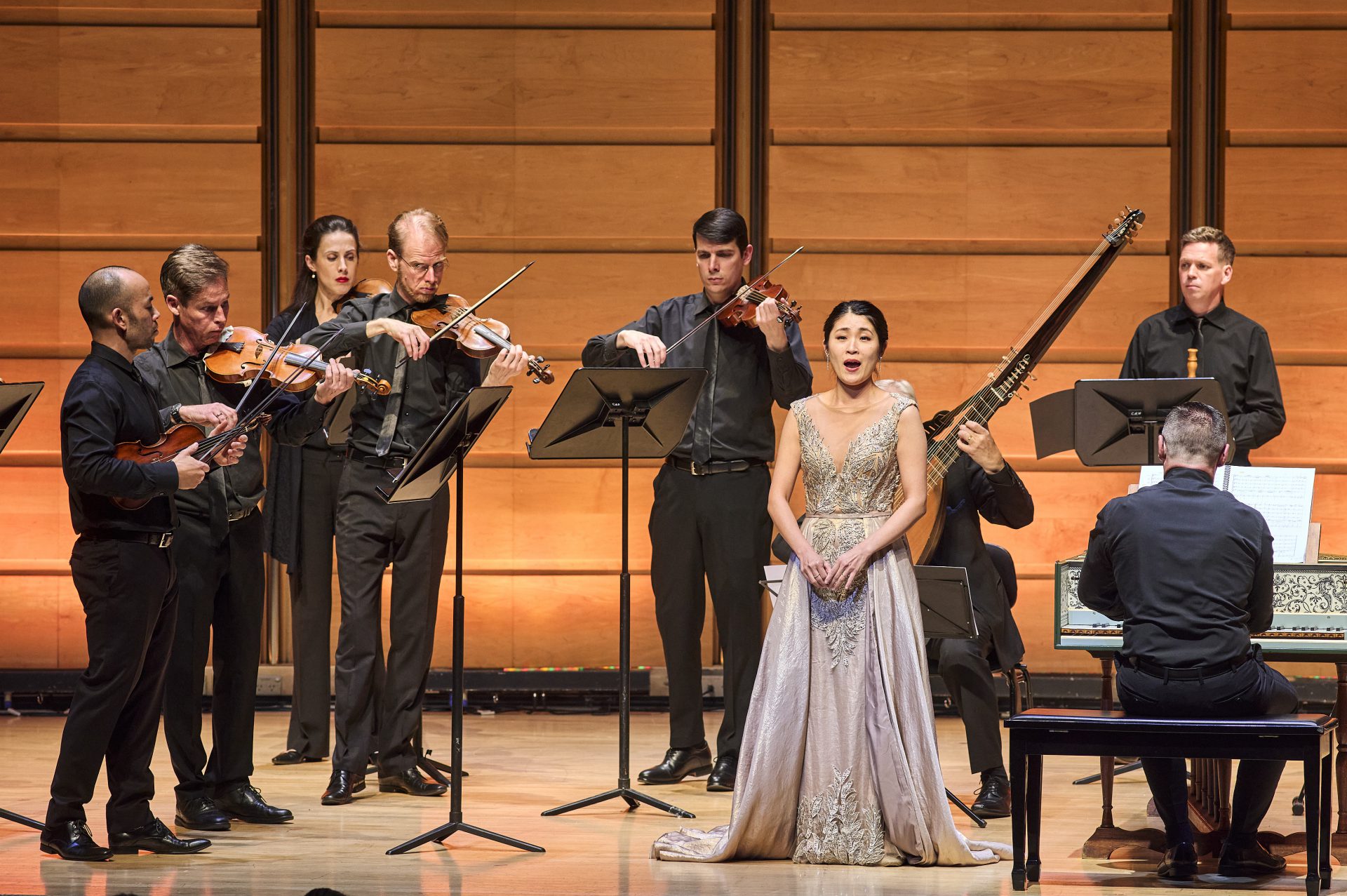An Overture is always a good place to start.
An overture to a famous Handel opera is especially fitting for a concert centred on popular Handel arias. It had all the energy you would expect from the Australian Brandenburg Orchestra. The sudden change to the sombre was particularly delightful – Adam Masters gave a lyrical performance. The B-section is quite different to other overtures – it features a short and jaunty French dance rhythm.
But what followed was not “Sovra balze scoscesi e pungenti”. It was, instead, Handel’s “Tu del Ciel ministro eletto” performed by the star of the night – Japanese soprano Yukie Sato. The audience could sense her operatic streak not only from her voice, but also from her expressions. She made herself at home in the role almost immediately, with the forceful recitative. The aria itself features a moment of repentance. It is haunting in its simplicity. Sato’s voice was so delicate that it wafted above the audience. There was never a tendency to resort to the showy or forceful.
That put her in good stead for the “Ombra pallide” from Handel’s Alcina, made famous by Joan Sutherland’s performance of that opera. In the recitative, we have a tormented Alcina who summons darker forces but is positioned to confront her diminishing powers. The aria traverses the lengths of the soprano range. Not once did Sato waver. The darkness of the aria was conveyed well, but with musical economy and a humble grace. There were no histrionics. And there was no screeching.
Handel’s “Doppo note” takes a more joyful turn. It is laden with coloratura. Sato jumps gleefully down several octaves, and climbs up again by gradually negotiating winding melismas. We are then treated to florid ornamentations in the iterations of this da capo aria. It all ends with an improvised cadence which sums up the motifs of the aria in the space of a few seconds.
Instrumental intermezzi were interposed throughout. Pisendel’s Violin Concerto in D major, JunP 1.5 features two horns, some chiaroscuro-like shifts between major and minor, and a few showstopping improvisations by Shaun Lee-Chen on violin, RV 314a. Only the slow movement of Vivaldi’s Violin Concerto in G major, RV 314a is performed. But it gave Lee-Chen an opportunity to showcase the silvery tone of the Baroque violin.
Special mention should be made of the “Tornami e vagheggiar” from Handel’s Alcina. It is one of the catchiest tunes in that opera. It is probably also one of the most difficult. There is also much coloratura and Sato ascends into the high parts of her range with ease. Sato’s improvised flourishes had a laser-like precision. In the melancholic B-section, Sato sings, as though casually contemplating, sitting on the floor of the stage.
An even catchier tune is Handel’s Rejoice, greatly, from his Messiah. This was the encore, which Sato sang confidently. The delicious key-change that comes with “He shall speak peace” is always a moment to behold. In most Handel arias, there is an elegant simplicity in style, but maximum effect. And as with Handel, so with Sato.
